CAA News Today
Call for Nominations: Jury Members for CAA Grants and Awards (2024–2027)
posted by CAA — April 03, 2024
CAA invites nominations and self-nominations for individuals with relevant expertise to serve on our juries for Awards for Distinction, Publication Grants, Travel Grants, and Fellowships. Jury service is one of the most impactful volunteer positions at CAA; help select our next awardees and grantees!
To apply, send an e-mail to Cali Buckley, CAA Manager of Grants and Awards & Director of CAA-Getty International Program, with the following:
- Statement of interest outlining qualifications and experience of nominee (150 words maximum)
- CV (two pages maximum)
Three-year terms begin in July. Current CAA Committee and Editorial Board members are not eligible to apply.
Deadline: June 1, 2024
CURRENT JURY OPENINGS
- Art Journal Award
- Charles Rufus Morey Book Award for Non-catalogue Books in the History of Art
- Arthur Kingsley Porter Prize for Art Bulletin articles
- The CAA/American Institute for Conservation Award for Distinction in Scholarship and Conservation
- Jury for the Artist Award for Distinguished Body of Work, Distinguished Artist Award for Lifetime Achievement, and Distinguished Teaching of Art Award
- Distinguished Feminist Awards for Scholars and Artists
- Millard Meiss Publication Fund for Books in Art History
- Wyeth Foundation for American Art Publication Grant
- Art History Fund for Travel to Special Exhibitions
- Professional Development Fellowship in Visual Art
- Michael Aurbach Fellowship for Excellence in Visual Art
Congratulations to the 2024 Distinguished Awardees!
posted by CAA — March 04, 2024
Each year at the Annual Conference CAA honors outstanding achievements in visual arts and art scholarship during Convocation by announcing the annual Awards for Distinction recipients. Congratulations to this year’s awardees!
Distinguished Award for Lifetime Achievement in Writing on Art
Distinguished Artist Award for Lifetime Achievement
Carrie Mae Weems and Suzy Lake
Art Journal Award
Ken Gonzales-Day, “Race, Whiteness, and Absence in Studio Practice,” Art Journal, Fall 2023
Alfred H. Barr Jr. Award
Oswaldo Chinchilla Mazariegos, James A. Doyle, and Joanne Pillsbury, eds., Lives of the Gods: Divinity in Maya Art, Metropolitan Museum of Art, 2022
Alfred H. Barr Jr. Award for Smaller Museums, Libraries, Collections, and Exhibitions
Perrin Lathrop, ed., African Modernism in America, Yale University Press and the American Federation of Arts, 2022
Frank Jewitt Mather Award
Kobena Mercer, Alain Locke and the Visual Arts, Yale University Press, 2022
Frank Jewitt Mather Honorable Mention
Andrea Giunta, The Political Body: Stories on Art, Feminism, and Emancipation in Latin America, trans. Jane Brodie, University of California Press, 2023
Charles Rufus Morey Book Award
Matthew Francis Rarey, Insignificant Things: Amulets and the Art of Survival in the Early Black Atlantic, Duke University Press, 2023
Arthur Kingsley Porter Prize
Daniel M. Zolli, “Making Up Materials: Donatello and the Cosmetic Act” The Art Bulletin, 105.4, 2023: 36–63.
CAA/AIC Award for Distinction in Scholarship and Conservation
Han Neevel and Birgit Reissland
Artist Award for a Distinguished Body of Work
Distinguished Teaching Award (Art)
Distinguished Teaching Award (Art History)
Monica Juneja
Distinguished Feminist Award (Art)
Distinguished Feminist Award (Art History)
Excellence in Diversity Award
Isabella Stewart Gardner Museum
AC2024 Edwards Memorial Support Grant Recipients Announced
posted by CAA — January 12, 2024
The CAA Edwards Memorial Support Grants, in memory of Archibald Cason Edwards Sr. and Sarah Stanley Gordon Edwards and made possible by Mary D. Edwards, support women who are emerging scholars and have received their PhD within the past two years or who are nearing the end of a doctoral program. Congratulations to the Annual Conference 2024 recipients, Daniella Berman and Phillippa Pitts!

Daniella Berman, Independent Scholar
Presentation: Revolution as Natural Disaster: Re-Framing 1789
Session: Disaster! Trouble in Eighteenth-Century Art
Presentation Abstract:
In Auguste Desperret’s lithograph, a volcano erupts the word LIBERTÉ. Lava cascades down, threatening to encircle successive cityscapes (representing countries at risk, identified by their flags) and sending figures – many in military uniform – running in the midground. In the foreground, the ruins of a castle bear the date 1789, surrounded by stone fragments inscribed with abandoned values including diving rights and feudalism. The sky is peppered with boulders bearing the words julliet, in reference to the July 1830 revolution.
Produced in 1833 for the satirical publication La Caricature, Desperret’s print Troisième eruption du volcan de 1789, reframes the impacts of the French Revolution as a natural disaster. In so doing, it draws on tropes prevalent in eighteenth-century dialogues inspired by Voltaire among others, that positioned the Revolution as a rupture, oftentimes violent, akin to natural phenomena. However, Desperret’s print calls into question how these natural disaster metaphors for the French Revolution and the St. Dominque revolt were utilized and transformed as the event was repeatedly reframed in the years following 1789 and well into the nineteenth century. What was the function of such analogies, and how were they visualized? This paper will explore the manifestations of Revolution as natural disaster across the material culture of the long eighteenth century, tracing the shifting dialogues that positioned the Revolution as a rupture or cyclical, as progress or failure, as upheaval or disruption, while considering the legacies of this rhetoric in the historiography of the Revolution and related visual material.

Phillippa Pitts, Boston University
Presentation: Fever Trees & Pharmacopeic Dreams: The Medical Manifest Destiny within Frederic Edwin Church’s Heart of the Andes
Session: U.S. Imperialism, Extraction, and Ecocritical Art Histories
Presentation Abstract:
Although often overlooked, the pursuit of health was central to the nineteenth-century ideas of empire that shaped both U.S. Americans’ imagined sphere of influence and the period’s enthusiasm for grand landscape painting. As the source of lifesaving cinchona, quinine, and diverse Peruvian elixirs, the Andes loomed particularly large in the antebellum imagination. Plays, panoramas, popular scientific texts, and patent medicine ads all cultivated popular interest in this supposed Edenic garden of health and abundance under perpetual threat of spectacular destruction by earthquakes and volcanoes. Taking Frederic Edwin Church’s The Heart of the Andes as its central case study, this paper recreates the conditions of vision in the antebellum city to reveal the underexamined pharmacopeic narratives within the painting and its dramatic performance. In doing so, it highlights how such displays of biodiverse abundance concealed the actual violence of botanical extraction. Indigenous and African laborers were, as one period observer noted, “made human sacrifices to furnish health to the white foreigners,” dying of disease as they carried the lifesaving treatments that would safeguard European and U.S. American imperial forces across the Global South. Today’s scholarly emphasis on the genocidal colonial excavation of Andean gold and silver has similarly elided the cultural, ecological, and human cost of extracting vegetable resources. Pairing insights from ecocriticism and critical disability studies, this paper argues for the importance of recognizing this medical Manifest Destiny, as well as artists’ role in naturalizing such discourse.
Wyeth Foundation Publication Grants for 2023
posted by CAA — November 17, 2023
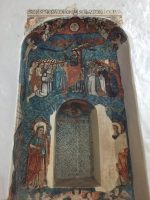
A photograph of a Maya Christian Mural of Yucatán. Credit: Amara Solari. All Rights Reserved.
Since 2005, the Wyeth Foundation for American Art has supported the publication of books on American art through the Wyeth Foundation for American Art Publication Grant, administered by CAA. The 2023 grantees are:
- Ellen Levy, A Book About Ray, MIT Press
- Ellen Macfarlane, Politics Unseen: Group F.64, Photography, and the Problem of Purity, University of California Press
- Yxta Maya Murray, We Make Each Other Beautiful: Art, Activism, and the Law, Cornell University Press
- Akela Reason, Politics and Memory: Civil War Monuments in Gilded Age New York, Yale University Press
- Amara Solari and Linda K. Williams, Maya Christian Murals in Early Modern Yucatán, University of Texas Press
Read a list of all recipients of the Wyeth Foundation for American Art Publication Grant from 2005 to the present.
BACKGROUND
For the Wyeth Foundation for American Art Publication Grant, “American art” is defined as art created in the United States, Canada, and Mexico. Eligible for the grant are book-length scholarly manuscripts in the history of American art, visual studies, and related subjects that have been accepted by a publisher on their merits but cannot be published in the most desirable form without a subsidy. The deadline for the receipt of applications is September 15 of each year.
Guidelines
Process, Materials, and Checklist
CONTACT
Questions? Please contact Cali Buckley, Manager of Grants and Awards, at cbuckley@collegeart.org.
Finalists for the 2024 Morey and Barr Awards
posted by CAA — November 16, 2023
CAA is pleased to announce the 2024 finalists for the Charles Rufus Morey Book Award and the two Alfred H. Barr Jr. Awards. The winners of the three prizes, along with the recipients of other Awards for Distinction, will be announced in January 2024 and presented during Convocation in conjunction with CAA’s 112th Annual Conference, February 14–17, 2024.
CHARLES RUFUS MOREY BOOK AWARD SHORTLIST, 2024
Delia Cosentino and Adriana Zavala, Resurrecting Tenochtitlan: Imagining the Aztec Capital in Modern Mexico City, University of Texas Press
Matthew Francis Rarey, Insignificant Things: Amulets and the Art of Survival in the Early Black Atlantic, Duke University Press
Tatiana Reinoza, Reclaiming the Americas: Latinx Art and the Politics of Territory, University of Texas Press
Andrew M. Shanken, The Everyday Life of Memorials, Zone Books
Jennifer Van Horn, Portraits of Resistance: Activating Art during Slavery, Yale University Press
ALFRED H. BARR JR. AWARD SHORTLIST, 2024
Emily Braun and Elizabeth Cowling, eds., Cubism and the Trompe l’Oeil Tradition, The Metropolitan Museum of Art
James A. Doyle, Oswaldo Chinchilla Mazariegos, and Joanne Pillsbury, eds., Lives of the Gods: Divinity in Maya Art, The Metropolitan Museum of Art
Diana Seave Greenwald, ed., Betye Saar: Heart of a Wanderer, Princeton University Press and the Isabella Stewart Gardner Museum
Leo G. Mazow, Storied Strings: The Guitar in American Art, Virginia Museum of Fine Arts
David Pullins, and Vanessa K. Valdés, eds., Juan de Pareja: Afro-Hispanic Painter in the Age of Velázquez, The Metropolitan Museum of Art
ALFRED H. BARR JR. AWARD FOR SMALLER MUSEUMS, LIBRARIES, COLLECTIONS, AND EXHIBITIONS SHORTLIST, 2024
Christophe Cherix, Courtney J. Martin, Akili Tommasino, and Stephanie Weissberg, Barbara Chase-Riboud Monumentale: The Bronzes, Princeton University Press, Princeton, and the Pulitzer Arts Foundation
Elliot Bostwick Davis, Edward Hopper & Cape Ann: Illuminating an American Landscape, Rizzoli Electa, New York, and The Cape Ann Museum, Boston
Apsara DiQuinzio, Jeff Gunderson, Alexander Nemerov, and Elaine Y. Yau, Adaline Kent: The Click of Authenticity, Rizzoli Electa New York and the Nevada Museum of Art, Reno
Perrin Lathrop, ed., African Modernism in America, Yale University Press, New Haven, and the American Federation of Arts
Nominations Open for CAA Juries
posted by CAA — May 11, 2023
CAA invites nominations and self-nominations for individuals to serve on our Awards for Distinction, Publication Grant, Fellowship, and Travel and Support Grant juries. Terms begin July 2023.
Candidates must possess expertise appropriate to the jury’s work and be current CAA members. They should not hold a position on a CAA committee or editorial board beyond May 31, 2023. CAA’s president and vice president for committees appoint jury members for service. Materials are due to CAA by June 1, 2023.
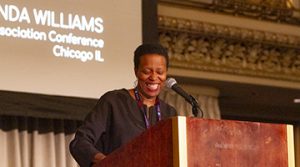
Amanda Williams speaks at Convocation at CAA’s 108th Annual Conference in Chicago
AWARDS FOR DISTINCTION JURIES
CAA has vacancies in the following juries for the annual Awards for Distinction for three years (2023–2026). Terms begin in July 2023.
- Art Journal Award (1 vacancy)
- The Alfred H. Barr Jr. Award/Alfred H. Barr Jr. Award for Smaller Museums, Libraries, Collections, and Exhibitions for museum scholarship (2 vacancies)
- Charles Rufus Morey Book Award for non-catalogue books in the history of art (1 vacancy)
- Frank Jewett Mather Award for art criticism (2 vacancies)
- Arthur Kingsley Porter Prize for Art Bulletin articles (1 vacancy)
- The CAA/American Institute for Conservation Award for Distinction in Scholarship and Conservation (1 vacancy)
- Jury for the Artist Award for Distinguished Body of Work, Distinguished Artist Award for Lifetime Achievement, and Distinguished Teaching of Art Award (1 vacancy)
- Excellence in Diversity Award (3 vacancies)
- Distinguished Feminist Awards for Scholars and Artists (1 vacancy)
FELLOWSHIP AND SCHOLARSHIP JURIES
CAA has vacancies on our Professional Development Fellowship juries for three years (2023–2026). Terms begin in July 2023.
- Professional Development Fellowships for Art History (2 vacancies)
- Professional Development Fellowships for Visual Art, CAA-GOLDEN Scholarship Program, and Michael Aurbach Fellowship for Excellence in Visual Art (3 vacancies)
TRAVEL/SUPPORT GRANT JURIES
CAA has vacancies on our jury for three years (2023–2026). Terms begin in July 2023.
- Art History Fund for Travel to Special Exhibitions (3 vacancies)
HOW TO APPLY
Nominations and self-nominations should include a brief statement (no more than 150 words) outlining the individual’s qualifications and experience and a CV (an abbreviated CV no more than two pages may be submitted). Please send all materials by email to Cali Buckley: cbuckley@collegeart.org. Nominations must be sent as a Microsoft Word or Adobe PDF attachment.
For questions about jury service and responsibilities, contact cbuckley@collegeart.org.
Deadline: June 1, 2023
Meet the Michael Aurbach Fellowship for Excellence in Visual Art Inaugural Recipient and Honorable Mentions
posted by CAA — March 07, 2023
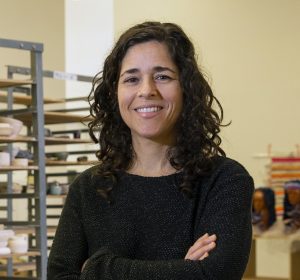
CAA is pleased to announce the first ever recipient of the first Michael Aurbach Fellowship for Excellence in Visual Art: Lauren Sandler.
Lauren Sandler is a ceramic artist and educator whose work deconstructs mythologies and investigates narratives of power and perspective. Sandler exhibits nationally, and gives talks, workshops, and publishes work concerning contemporary and historic issues in ceramics. She holds an MFA in Ceramics from Penn State University, and undergraduate degrees in Anthropology and Ceramics from Ithaca College and SUNY New Paltz. She served on the Board of the National Council on Education for the Ceramic Arts as Director at Large from 2019–22 and is currently Associate Professor and Program Head of Ceramics at Tyler School of Art and Architecture at Temple University.
HONORABLE MENTIONS
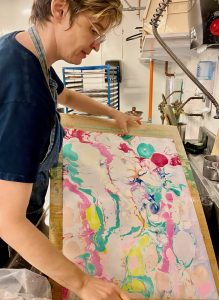
Ellen Wetmore, University of Massachusetts Lowell
Ellen Wetmore is a Professor of Art and Chair of the Department of Art and Design at the University of Massachusetts, Lowell. She is a graduate of the University of Michigan (BFA, BA in Art History) and Tufts University/School of the Museum of Fine Arts (MFA), and joined UMass Lowell in 2007. She is a participant of CAA, UFVA, Cultivamos Cultura, and past member of the Boston Sculptors Gallery. Her awards include a 2017 Berkshire Taconic ART Fellowship and a 2017 Massachusetts Cultural Council Fellowship. Her social concerns include neuro-atypical disabilities, race and teaching, money and art. Wetmore’s current artistic practice reinterprets history, art history, and investigates visual thinking. Wetmore’s projects have been featured at the Boston Cyberarts Art on the Marquee, the Indianapolis Art Center, the Sandwell Arts Trust, Ciné Lumière, London, CologneOff, Germany, the InShadow Festival, Lisbon, and Videoholica in Bulgaria. She is a 2012 School of the Museum of Fine Arts Traveling Fellow and a summer 2015 visiting artist at the American Academy of Rome. Her most recent solo exhibition was a drawing study of the collection at the Fitchburg Art Museum. Her current science collaborations explore printed, fabric-based video displays, text and memory in fat cells, and the characterization of high fire ceramic glazes in a Cambodian wood fired kiln. Her first graphic novel, Dante’s Inferno, is a fictional account of race and the academic hiring process.
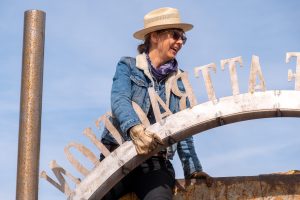
Allison Wiese, University of San Diego
Allison Wiese is an interdisciplinary artist who makes sculptures, installations, sound works, performances, and architectural interventions. Her work is often created for public spaces at the boundaries of or outside institutions, and has been exhibited at, among other venues, Machine Project, Los Angeles, the Museum of Contemporary Art, San Diego and Socrates Sculpture Park, New York. She is the recipient of a Louis Comfort Tiffany Award and has received grants from Art Matters, Creative Capital, the Cultural Arts Council of Houston, and the City of San Diego’s Commission for Arts and Culture. A fellow of MacDowell and an alumna of the Skowhegan School of Painting and Sculpture, Wiese was a Core Fellow of the Museum of Fine Arts, Houston, received her MFA from the University of California, San Diego, and a BA from Brown University. Wiese is an Associate Professor at the University of San Diego.
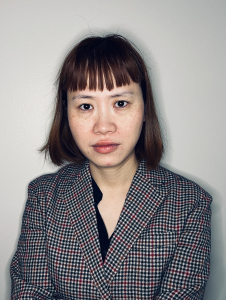
Ziui Vance, Temple University
Ziui explores the semiotics of bodies, their chaotic signals, and spatiality. She makes the paintings, objects, and installations inside the disputed realm between affection and dominance, rules and reality. Characterized by a play-like process, Ziui describes a variety of body configurations with an intricate intensity that reflected on gender, ethnicity, and perceptions: an infinite tapestry of imagery associated with her exoneration from the polar complexities of being Chinese in the United States.
ABOUT THE FELLOWSHIP
The Michael Aurbach Fellowship for Excellence in Visual Art recognizes and honors CAA members who have obtained an MFA or equivalent in studio art and are currently teaching studio classes full-time or part-time. The purpose is to support these artist members as they fulfill their goals as visual arts professionals. On an annual basis, CAA will grant a $7,500 award and registration to the CAA Annual Conference to a qualified artist member teaching at an American or international university or community college. A jury of artists will adjudicate the fellowship and a proposal will not be required; the recipient will be selected solely based on their work. Learn more.
Meet the 2022 Professional Development Fellows
posted by CAA — February 07, 2023
CAA is pleased to announce the recipient of the 2022 Professional Development Fellowships. The recipient of the $10,000 fellowship in art history is Mechella Yezernitskaya, Bryn Mawr College, and the recipient of the $10,000 fellowship in visual art is Boone Nguyen, California State University, Los Angeles.
The honorable mentions in art history were awarded to Jack Crawford, City University of New York, and Astrid Tvetenstrand, Boston University. The honorable mentions in visual art are awarded to Jenna Carlie, California Institute of the Arts, and Alberto Lozano Ruvalcaba, Mendocino College.
2022 PROFESSIONAL DEVELOPMENT FELLOWSHIP IN ART HISTORY
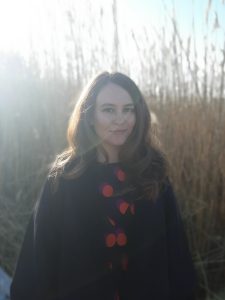
Mechella Yezernitskaya, Bryn Mawr College
Mechella Yezernitskaya is a Ukrainian American art historian, writer, and curator. She is a doctoral candidate in the Department of History of Art at Bryn Mawr College where she specializes in modern and contemporary art. Mechella received her M.A. from Bryn Mawr College and B.A. with honors in Art History from Fordham University. Her dissertation examines representations of temporal rupturing in the wartime visual, literary, and film culture of the avant-gardes of the late Russian Empire and the early Soviet Union. She examines war-related imagery in the work of artists of Belarusian, Russian, and Ukrainian origin across media including illustrated books, poetry, collage painting, performance, and film. By drawing upon theories from trauma and disability studies, Mechella explores the roles of the civilian and combatant, the temporal boundaries of wartime and peacetime, the consequences of imperialism, the rise of nationalism, and the affective experiences of war.
Her work has been supported by grants and fellowships from the American Association of University Women, the Association of Slavic, East European, and Eurasian Studies (ASEEES), the Pittsburgh Foundation, the Malevich Society, the New York Public Library, and the Graduate School of Arts and Sciences of Bryn Mawr College. She has published in ARTMargins Online, Baltic Worlds, post: notes on art in a global context, Slavic & East European Information Resources, and in the edited volume Artistic Expressions and the Great War, A Hundred Years On (Peter Lang Publishing, 2020). She has presented her research at Södertörn University, Stockholm; Karazin University, Kharkiv; Hofstra University, New York; Temple University, Philadelphia; The Museum of Russian Art, Minneapolis; and ASEEES. She has also held guest curatorial positions and fellowships at The Museum of Modern Art, the Philadelphia Museum of Art, the Pennsylvania Academy of the Fine Arts, and the Brooklyn Museum.
HONORABLE MENTIONS IN ART HISTORY
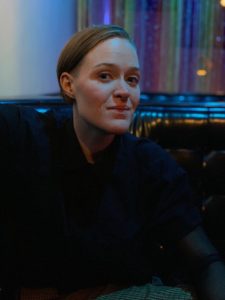
Jack Crawford, City University of New York
Jack Crawford is a teaching artist and art historian. She is currently a Lecturer at Vanderbilt University and University of Tennessee, Knoxville and has previously taught at the New York City College of Technology. She holds a BA from Barnard College and is currently completing her PhD in Art History at the CUNY Graduate Center. Her research, for which she received a 2021–2022 ACLS/Luce Dissertation Fellowship in American Art and a dissertation award from the CUNY Committee on Globalization and Social Change, focuses on appropriation and aesthetics of abundance in queer performance in the postwar period.
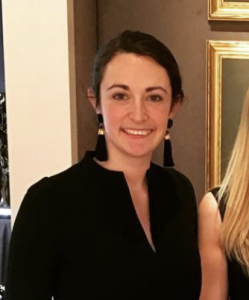
Astrid Tvetenstrand, Boston University
Astrid studies the history of American painting, decorative arts, and architecture. She explores these fields through practices of collection, economic development, and the consumption of American property. Her dissertation traces the connections between American art patronage, second homeownership, and landscape painting at the end of the nineteenth century. She argues that the process of collecting art and land was an effort made by affluent Americans to “buy a view.” By recognizing landscape paintings as investments and monetary goods, Astrid sheds new light on Gilded Age consumerism, aesthetics, and taste. She also localizes art market exchanges within a larger conversation about the privatization of public space.
Astrid’s work is encouraged by positions and fellowships held at the New York Public Library, Museum of Fine Arts, Boston, Massachusetts Historical Society, Nichols House Museum, Bundy Museum of History and Art, Peabody Essex Museum, deCordova Sculpture Park and Museum, Decorative Arts Trust, and Winter Antiques Show.
2022 PROFESSIONAL DEVELOPMENT FELLOWSHIP IN VISUAL ARTS
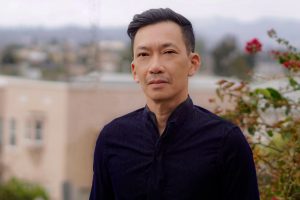
Boone Nguyen, California State University, Los Angeles
Boone Nguyen is an artist of the Southeast Asian diaspora. When he was a child, his family left Saigon and resettled as refugees in South Philadelphia. His experience as a refugee in the metropole informs his work through the themes of displacement and place-building, landscape and historical memory, leaving and returning, loss and transformation. His immersive moving image installations are thus fueled by a continuing search for a distant yet familiar homeplace, where the intimacies of life and death and the dialectic of subjection and resistance serve as a living archive of critical memory that is both personal and collective. He has exhibited his work in Philadelphia, Honolulu, Minneapolis, Los Angeles, and Tokyo.
Boone Nguyen has served in curatorial and management positions in community arts organizations, including Asian Arts Initiative, Frameline, and Scribe Video Center. He holds a BA in American Studies (minor in Asian American Studies) from Yale University. As a Cota-Robles Fellow, he earned an MA in Ethnic Studies at the University of California, San Diego. He was a recipient of a 2018/19 MCAD–Jerome Foundation Fellowships for Early Career Artists, administered by the Minneapolis College of Art and Design and funded by the Jerome Foundation. Nguyen is currently in his final semester of the MFA program at California State University, Los Angeles where he also lectures in the Asian and Asian American Studies Department.
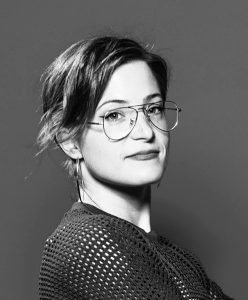
Jenna Carlie, California Institute of the Arts
Jenna studied photography at Speos Institute of Photography in Paris, France and went on to study at Rhode Island School of Design. During the time at RISD, Jenna worked under Annie Leibovitz, Mark Katzman, and Dusty Kessler. In 2016, Jenna graduated with a BFA in photography from Rhode Island School of Design. Jenna moved to Los Angeles and in 2017 worked for Lauren Greenfield, in 2018 worked for Alexa Meade, and by the end of 2018 Jenna Carlie Photography and Design was opened for business. Between 2018 and 2020 Jenna worked on various photographic series for different private collections in the Midwest. In 2020, the Saint Louis Art Museum hired Jenna as their travel contract photographer and later as their in-house photographer, where Jenna is still employed. Jenna is currently getting an MFA from California Institute of the Arts and is expected to graduate in 2024.
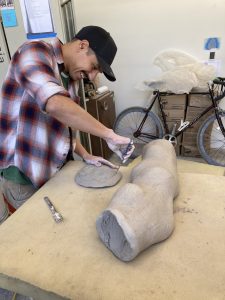
Alberto Lozano Ruvalcaba, Mendocino College
I was born in Tijuana, Baja California in 1993. My family lived in Rosarito next to the beach on a street called Niño Artillero (artillery child). My school was named after Emiliano Zapata, a leader of the Mexican revolution. My parents moved us to the USA when I was eight years old. We left everything behind except for each other and the memories that persist of our home and of the natural landscape around it. They brought us to this country for my siblings and I to have a better future than what was available back home. Thanks to my parents and siblings and my own perseverance, I am now the first person in my family to pursue a master’s degree from a university. I am now a permanent resident of the USA and a candidate for an MFA degree.
ABOUT THE PROFESSIONAL DEVELOPMENT FELLOWSHIP
CAA’s Professional Development Fellowship program supports promising artists and art historians who are enrolled in MFA and PhD programs nationwide. Awards are intended to help them with various aspects of their work, whether for job-search expenses or purchasing materials for the studio. CAA believes a grant of this kind, without contingencies, can best facilitate the transition between graduate studies and professional careers. The program is open to all eligible graduate students in the visual arts and art history. Learn more.
CAA 2023 Awards for Distinction
posted by CAA — February 06, 2023
CAA announces the 2023 recipients of Awards for Distinction. By honoring outstanding member achievements, CAA reaffirms its mission to encourage the highest standards of scholarship, practice, connoisseurship, and teaching in the arts. With these annual awards, CAA seeks to honor individual artists, art historians, authors, museum professionals, and critics whose accomplishments transcend their individual disciplines and contribute to the profession as a whole and to the world at large.
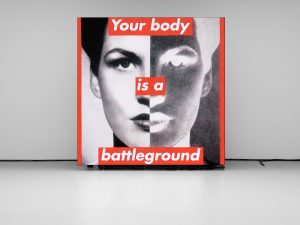
Installation view, Barbara Kruger, David Zwirner, New York, June 30–August 12, 2022. Courtesy David Zwirner.
Among the awards, the Distinguished Artist Award for Lifetime Achievement is presented to Barbara Kruger whose influential works have consistently had viewers question the larger society around them for over four decades.
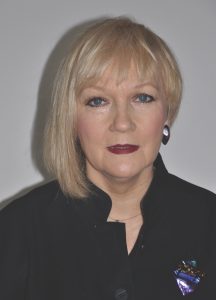
Griselda Pollock
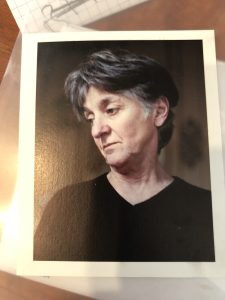
Svetlana Alpers
The Distinguished Lifetime Achievement Awards for Writing on Art are being presented to feminist art historian Griselda Pollock and art historian of northern Renaissance and Dutch Golden Age art Svetlana Alpers.
Art Journal Award
Alfred H. Barr Jr. Award
Julia Burtenshaw, Héctor García Botero, Diana Magaloni, and María Alicia Uribe Villegas, The Portable Universe / El universo en tus manos: Thought and Splendor of Indigenous Colombia (DelMonico Books/Los Angeles County Museum of Art, 2022)
Alfred H. Barr Jr. Award for Smaller Museums, Libraries, Collections, and Exhibitions
No recipient this year
Frank Jewett Mather Award
Eduardo Cadava
Charles Rufus Morey Book Award
Sylvia Houghteling, The Art of Cloth in Mughal India (Princeton University Press, 2022)
Arthur Kingsley Porter Prize
Tomasz Grusiecki, “Doublethink: Polish Carpets in Transcultural Contexts” and Hugo Shakeshaft, “Beauty, Gods, and Early Greek Art: The Dedications of Mantiklos and Nikandre Revisited”
Artist Award for a Distinguished Body of Work
Dawoud Bey
CAA/AIC Award for Distinction in Scholarship and Conservation
Michele Marincola and Lucretia Kargère
Distinguished Artist Award for Lifetime Achievement
Barbara Kruger
Distinguished Lifetime Achievement Award for Writing on Art
Svetlana Alpers and Griselda Pollock
Distinguished Teaching of Art Award
Mary Lum
Distinguished Teaching of Art History Award
No recipient this year
Excellence in Diversity Award
Arlene M. Dávila
Citations:
Art Journal Award
Emilie Boone, “When Images in Haiti Fail: The Photograph of Charlemagne Péralte,” Art Journal, Winter 2022
The 2022 jury has chosen Emilie Boone as the recipient of the 2022 Art Journal Award for the essay, “When Images in Haiti Fail: The Photograph of Charlemagne Péralte.” Boone’s deconstruction of a single photo offers readers an entry into the contested history surrounding the US occupation of Haiti, as well as the attendant visual politics of this period (1915–34). Through close textual analysis of Péralte’s historically significant image, the author weaves together a situated narrative of Haitian visual culture under occupation, interrogating crucial notions of ontology through examination of photographic composition. Boone frames the racialized body as a contested and imagined site rife for adaptation and tampering, first through vernacular photographic techniques, as well as other forms of pictorial representation. In the end, Boone’s text summons an interrogation of tradition, and indeed, of the implicit politics of the medium of photography itself.
Jury members:
Omar Kholeif, Sharjah Art Foundation, Chair
Phil Taylor, George Eastman Museum
Tilo Reifenstein, York St John University
Alfred H. Barr Jr. Award
Julia Burtenshaw, Héctor García Botero, Diana Magaloni, and María Alicia Uribe Villegas, The Portable Universe/El universo en tus manos: Thought and Splendor of Indigenous Colombia (DelMonico Books / Los Angeles County Museum of Art, 2022)
The Western concept of El Dorado has long impacted the study of the ancient cultures of Colombia, overshadowing the manifold stories that pre-Columbian art weaves across time and space. How can museum curators uncover those stories, illuminate their nuanced complexities, and present them to the public in engaging and innovative ways? The Portable Universe/El universo en tus manos is the remarkable outcome of just such an undertaking. Both the catalog and related exhibition are the result of a six-year collaboration between the Los Angeles County Museum of Art and Museo del Oro, Bogotá. Most importantly, the curators collaborated with a contemporary Indigenous community in Colombia, the Arhuaco of the Sierra Nevada de Santa Marta. The Portable Universe reveals that pre-Columbian artifacts—including goldworks, ceramics, and textiles—are not mere objects, but rather messengers that link living beings (people, animals, plants) and places across space and time. Each is, in brief, a portable universe. The Arhuaco explain that these messengers need to be “nourished,” or brought back to life. Thus, the concept of nourishment enters curatorial practice: a form of sustained, reciprocal attention that goes well beyond customary models of stewardship. Incisively written, gorgeously illustrated, and ingeniously designed, this groundbreaking book brings together interdisciplinary research (in history, archaeology, anthropology, environmental studies, and ornithology) and Indigenous knowledge to propose a new approach to the material and spiritual culture of ancient Colombia, one which underscores the transformative powers of cross-cultural dialogue. A major advance in the study of Indigenous art, the book spurs us to creatively rethink our notions of both the museum and scholarship.
Jury Members:
Benjamin Anderson, Cornell University, Co-chair
Karen Lang, Independent Scholar, Co-chair
Francesca Pietropaolo, Independent Scholar
Jochen Wierich, Aquinas College
Frank Jewett Mather Award
Eduardo Cadava
The jury has awarded this year’s prize to Eduardo Cadava, based on his elegant book Paper Graveyards (MIT Press, 2021) and in recognition of his long career within the field of art criticism, especially his influential theories of photography. Paper Graveyards is the culmination of decades of Cadava’s thinking about how images and technical media actively transform social and political life, and his far-ranging case studies (including examinations of artists Leon Golub, Nancy Spero, Fazal Sheikh, and Susan Meiselas) orient themselves towards activist practices that speak to and from the margins. Wending through ruminations on materiality, forms of documentary, and modes of circulation, Cadava writes a new account of what it means to pay visual witness in the face of constant emergency.
Jury members:
Julia Bryan-Wilson, Columbia University, Chair
Nicole Fleetwood, New York University
Kim Theriault, Dominion University
Charles Rufus Morey Book Award
Sylvia Houghteling, The Art of Cloth in Mughal India (Princeton University Press, 2022)
The Art of Cloth in Mughal India by Sylvia Houghteling focuses on the production, circulation, and consumption of South Asian textiles in the sixteenth and seventeenth centuries, a period of both global manufacturing dominance and intense artistic creativity for Indian cloth-makers. The book offers a uniquely comprehensive account of the complex meanings of cloth as it moved across the Mughal imperial courts, the kingdoms of Rajasthan, the Deccan sultanates, and the British Isles, all the while remaining attentive to the richness of regional specialties. Houghteling brilliantly weaves together a capacious range of topics including issues of patronage and labor, iconography and symbolism, technical and ecological considerations, connections with poetry and other fine as well as decorative arts, and the sensory experience of the various textiles, from gauzy muslins to tent panels. Starting with an account of the Emperor Akbar’s patronage of dyers and weavers, Houghteling analyzes the elaborate Bikaner Robe, which Akbar’s successor Jahangir presented to a provincial raja. She moves on to the elegant textile culture of the Rajput Court of Amber and the kalamkari cloth of Machilipatnam, ending with a survey of the flourishing market for Hindustani cloth in early modern Britain, evidence of a new global cosmopolitanism that linked the Mughal court with the Stuarts. The book’s handsome design, color illustrations, and vivid writing make Art of Cloth an engaging read for scholars and general readers alike.
Jury members:
Lisa Schrenk, University of Arizona, Chair
John Cunnally, Iowa State University
Laura Anne Kalba, University of Minnesota, Minneapolis
J. P. Park, University of Oxford
Andrew Wasserman, American University
Arthur Kingsley Porter Prize
Tomasz Grusiecki and Hugo Shakeshaft
Tomasz Grusiecki, “Doublethink: Polish Carpets in Transcultural Contexts,” The Art Bulletin, September 2022
That art objects move, and that in doing so their meaning changes, is now widely accepted, but conceptualizing and describing the ways in which such changes occur still often eludes us. Tomasz Grusiecki’s winning essay provides a framework for doing just that, in its elegant examination of the lives and plural significances of carpets in early modern Eastern and Central Europe. Borrowing George Orwell’s notion of “doublethink,” Grusiecki shows, with a keenly historical eye, that there was little tension for early modern patrons between the provenience of carpets in Safavid Persia or Ottoman Turkey and their adaptation into local European contexts, where they became fundamental to the construction of individual and burgeoning national identities. Grusiecki moves past the simple charting of the “surprising” provenances of individual objects to weave a complex web in which he embraces the inevitable messiness of movement—and of meaning—in early modernity. Grusiecki’s transcultural doublethink promises to be a concept of great utility for our discipline as it continues to grapple with these issues.
Hugo Shakeshaft, “Beauty, Gods, and Early Greek Art: The Dedications of Mantiklos and Nikandre Revisited,” The Art Bulletin, May 2022
In his groundbreaking article “Beauty, Gods, and Early Greek Art: The Dedications of Mantiklos and Nikandre Revisited,” Hugo Shakeshaft transforms narratives around the topic of beauty in the religious art of archaic Greece. He moves away from such still-influential Enlightenment frameworks as Kant’s account of aesthetic autonomy and Winckelmann’s concern with timeless aesthetic values to examine the question of beauty from a historicizing vantage point. In order to assess how beauty mattered for those who patronized, created, employed, and observed artworks in ancient Greece, Shakeshaft focuses on two anthropomorphic votive figurines—a bronze statuette dedicated by Mantiklos (ca. 700–675 BCE) and a marble life-size statue dedicated by Nikandre (ca. 660–630 BCE). In his deeply researched discussion, he reconsiders these celebrated objects through a layered analysis of their forms, inscriptions, and materials as well as by reading them alongside aesthetic values expressed in the writings of Homer and Hesiod. In particular, he calls attention to the ideal of charis, a rich concept that can be translated as “beauty,” “favor,” “gratitude,” and “grace,” to show how beauty was inextricably tied to ideas of reciprocity. Ultimately, Shakeshaft posits that beauty needs to be treated as rigorously as any other interpretive category, and—far from being a universal—demands contextualized cultural awareness.
Jury members:
Adam Jasienski, Southern Methodist University, Chair
Susanna Berger, University of Southern California
Christine I. Ho, University of Massachusetts Amherst
Artist Award for a Distinguished Body of Work
Dawoud Bey
Dawoud Bey has a photographic career spanning four decades, beginning in 1975 with the seminal five-year portrait project of everyday life in Harlem. His work has recently traveled in a retrospective titled An American Project” at the San Francisco Museum of Modern Art and co-organized by the Whitney Museum of American Art. In his recent publication, Dawoud Bey: Two American Projects, his work explores race, African American history and underrepresented communities; featuring portraits memorializing the six children who were victims of the Ku Klux Klan’s bombing at 16th Street Baptist Church in Birmingham, and a group of black-and-white landscapes made in Ohio where the Underground Railroad once operated. In the 1980s Bey collaborated with artist David Hammons by documenting the performances Bliz-aard Ball Sale and Pissed Off. In 2017 he received the MacArthur Fellowship and is Professor of Photography at Columbia College Chicago where he has taught for over twenty years. Bey’s work is in permanent collections of leading museums, including the Art Institute of Chicago, the Museum of Modern Art in New York, and the Whitney Museum of American Art.
Jury members:
Derek G. Larson, Purdue University, Chair
Stephen Fakiyesi, Independent Artist
Jessica Hong, Art Museum
CAA/AIC Award for Distinction in Scholarship and Conservation
Michele Marincola and Lucretia Kargère
Michele Marincola and Lucretia Kargère are recognized by conservators, curators, and art historians, for their contributions to the study of European sculpture. Their recent, joint publication titled The Conservation of Medieval Polychrome Wood Sculpture: History, Theory, Practice (Los Angeles: Getty Conservation Institute, 2020) is a major contribution to the fields and represents two-decades of collaborative work.
Marincola is the Sherman Fairchild Chair, and Sherman Fairchild Distinguished Professor of Conservation, at the Conservation Center, Institute of Fine Arts, New York University, a position she has held since 2014. Kargère is a Conservator of Medieval Sculptures at the Metropolitan Museum of Art and the Cloisters. Marincola previously worked with Kargère at the Cloisters where they collaborated on conservation and research. Marincola’s contributions to scholarship include research on the sculptor Tilman Riemenschneider and the translation and commentary of Johannes Taubert’s Farbige Skulpturen into English. Kargère, who is known for her work on French sculpture, has collaborated with Maricola and conservation scientists at the Metropolitan Museum of Art on the publications about the materials and techniques used in Medieval polychrome sculpture.
Both Marincola and Kargère are recognized for having educated students and colleagues about the history and conservation of European Medieval polychrome sculpture. Numerous students, interns, and Fellows have benefitted from their expertise both at the Metropolitan Museum of Art and at New York University. Moreover, Marincola and Kargère are known for producing publications and presentations that touch upon important issues in art conservation, art making, art history, and ethics.
Jury members:
Tiarna Doherty, University of Delaware and Smithsonian, Chair
Fernanda Valverde, Amon Carter Museum
Rebecca Rushfield, Rebeccah Rushfield Arts Consultants
Distinguished Artist Award for Lifetime Achievement
Barbara Kruger
Barbara Kruger’s distinct artistic practice has palpably shaped the broader social, cultural, and visual fields for decades. For over four decades, the artist has persistently expanded her practice, exploring new media, from video to large-scale installations, collaborating with popular brands (with some even co-opting her iconic visual language) extending her influence beyond the art world, to pursuing intrepid interventions in the public sphere. Best known for her works with bold, declarative, often imposing and seemingly authorless text in which she overlays appropriated black-and-white imagery, Kruger interrogates mass media and consumer culture’s effects on how we see and understand ourselves. As the artist expressed, “I work with pictures and words because they have the ability to determine who we are, what we want to be and what we become,” and she sees her works as prompts “to question and change the systems that contain us.” With the internet boom, explosion of social media, advertising’s increasingly sophisticated, if not untruthful, tactics, and advertising’s constant presence now from an infinite number of sources, Kruger’s work, past and present, feels more relevant than ever (as seen with numerous and recent solo presentations around the globe). Throughout her dedicated practice, Kruger has reminded us that these issues will continue to raise existential concerns and impact society writ-large until actively contended with.
Jury members:
Derek G. Larson, Purdue University, Chair
Stephen Fakiyesi, Independent Artist
Jessica Hong, Art Museum
Distinguished Lifetime Achievement Award for Writing on Art
Svetlana Alpers and Griselda Pollock
Renowned for her groundbreaking work on Dutch Golden Age painting, Svetlana Alpers’ writings have had a profound impact on the field of art history. A founder of the journal Representations and one of the central figures in the revisionist turn of the new art history, Alpers broke with long-standing approaches to northern European art by asking new questions about visual culture and ways of seeing. In The Art of Describing (1983), her questions about optics and image-making devices ignited scholarship in premodern and modern fields alike. In subsequent publications, Alpers’ notions about the monetary value of art materials and the marketing strategies of artists also proved fertile ground for later scholars. However, the Art of Describing did not only reinvent methodologies for understanding Dutch art, pushing against the field’s reliance on ideas forged in the study of Italian artistic practices; it recast what it means to “describe” art, the ekphrastic basis of our field, effecting the writing of art history ever since.
Professor Emerita from the University of California at Berkeley, where she taught from 1962–98, Alpers continues to publish across and redefine fields ranging from the Baroque to contemporary art and photography history. Widely known for Rembrandt’s Enterprise: The Studio and the Market (1988), which won CAA’s Charles Rufus Morey Book Award in 1990, Alpers has also penned field-changing monographs on Tiepolo, Rubens, and Velázquez. To this list, Alpers has added her latest book, Walker Evans: Starting from Scratch (2020), a monograph on one of the most important photographers of the twentieth century, and part of a subset of her writings that have confronted directly the challenges of photography, as The Art of Describing long ago became required reading in this field. Her recent publications such as Roof Life (2013) make concrete the writerly challenge that her work has always issued to art history, the need to reinvent “how” as well as “what” we say and write about art.
Arguably the leading feminist art historian of the generation after Linda Nochlin, Griselda Pollock first made an impact with a vigorous dissembling of the “artists mythologies and media genius” that attended the canonization of artists such as Vincent van Gogh. She went on to devote close attention to previously devalued women artists such as Mary Cassatt, Eva Hesse, and, more recently, in her innovative Virtual Feminist Museum, Charlotte Salomon. Essays such as “Modernity and the Spaces of Femininity” in her 1987 book Vision and Difference were powerful examples of her strategy of “feminist interventions” into the history of art, rather than falling for the trap of settling for the inclusion of women artists within the prevailing patriarchal structures.
The Award acknowledges this groundbreaking work as well as a wider, far-reaching achievement, ranging across several decades. Pollock’s writing has long refused to stay in its art historical place, to belong to a single position or way of working. Her brand of feminist revisionism constantly engages the social history of art, bridges art history with cinema studies, opens onto the fields of psychoanalysis and cultural geography, while also participating in the debates of postcolonial theory and responding to the imperatives of decolonization. While remaining attentive to the demands of each of these critical disciplines, her writing about art remains passionate, profound, open-hearted, and, always, political.
Jury Members:
Terry Smith, University of Pittsburgh, Chair
George Baker, University of California Los Angeles
Gillian Elliott, George Washington University
Distinguished Teaching of Art Award
Mary Lum
Mary Lum is CAA’s 2023 Distinguished Teaching of Art Award recipient. Lum, an accomplished visual artist in her own right, has been a professor of painting and drawing at Bennington College in Vermont since 2005, and prior to that taught at the New York State College of Ceramics at Alfred University. Among her many notable contributions as an educator is her ability to nurture a passion for art making in her students that has taken many of them from foundational studies, to graduate school, and to successful professional practices as artists, art directors, curators, and academic professors.
Steven Frost, Assistant Professor and Faculty Director, University of Colorado Boulder says of his time as a foundation student under Lum; “With her help I began to understand a creative practice needed to be fed by more than time in the studio . . . She took the time to bring me up to speed and prepare me for the professional world.”
Rebekah Modrak, foundation student, current professor University of Michigan, STAMPS School of Art and Design says of Lum “Thank goodness her main concern was the possibility that there might be compelling artists lurking below our early and often tenuous attempt at artmaking.” “When I think of moments in my life that changed my trajectory,” says former student and UK-based art director and curator Christine Serchia, “Mary Lum is responsible for multiple moments.”
CAA is excited to recognize Mary Lum’s more than two decades of teaching with this award.
Jury members:
Derek G. Larson, Purdue University, Chair
Stephen Fakiyesi, Independent Artist
Jessica Hong, Art Museum
Distinguished Feminist Awards
Nalini Malani and Marsha Meskimmon
Nalini Malani’s work has been recognized in solo exhibitions at over thirty international institutions. Her work has embraced painting, video, stop-motion, and other time-based media, while engaging issues of women’s equality in India, where her family took refuge in 1946 after the partition. Malani’s early career in painting gave way to a more focused approach to time-based media in the 1990s, making works such as the 1998 Remembering Toba Tek Singh, a meditation on nuclear testing in India and Pakistan. Focusing on the aftereffects of the devastating partition of India and Pakistan, Malani’s work has been liberal in its use of media types and productions, including the emotive devices of theater.
Malani has turned this unflinching attention to the ways in which the woman’s body has been used as a pawn in games of nationalism and internationalism. Her Mother India: Transitions in the Construction of Pain (2005) combined archival footage and other imagery, a series of juxtapositions that shed new light on the depicted contorted bodies of women. She continues this thread in a 2020 multimedia performance of images projected onto the Taj Mahal Hotel, inspired by the week-long gang rape and murder of an eight-year-old girl. Malani’s work is a beacon; her work is eminently important now as the world bears witness to an increase in femicide and gender-based violence.
Marsha Meskimmon, PhD is a professor of art history who studies, teaches, and writes on global feminisms. Her groundbreaking scholarly work has been matched by a commitment to promoting and mentoring women in the field. Meskimmon is editor for Drawing In, and she is also a consultant editor for Open Arts Journal. She has authored or co-authored twelve books over her career, with a sustained focus on the political stakes of feminism and its ability to shed light on the circulation of art and the discourse of aesthetics. With Amelia Jones, she edits the book series Rethinking Art’s Histories for Manchester University Press, a series that has promoted books that rethink art and its histories, and has used feminist thought in relation to “global” and non-Western approaches to art history. Her work on the exhibition WACK! Art and the Feminist Revolution marked an important return to feminism in the art world, a redefinition of the stakes and of the purview of its ideas. Her essay for the exhibition succeeded in arguing why feminism is global—describing it as a constellation of approaches, places, and times. It models an interdisciplinary and collaborative idea of feminism, not a static theory that spreads from the North Atlantic out to world. Her tireless work on behalf of women in the arts is a model for scholars who do their work out of a stated commitment.
Jury Members:
Delinda Collier, School of the Art Institute of Chicago, Chair
Yvonne Love, Penn State University
Midori Yoshimoto, New Jersey City University
Excellence in Diversity Award
Arlene M. Dávila
Arlene M. Dávila is Professor of Anthropology and American Studies at New York University and founding director of The Latinx Project. Established in 2018, The Latinx Project is an interdisciplinary space focusing on US Latinx Art, Culture and Scholarship. In addition to hosting artists and programs, it functions as a platform fostering critical public programming.
Professor Dávila’s has published extensively on Latinx cultural politics in museums and contemporary art, media, and urban environments to explore the intricacies and ultimate challenges of visualizing Latinx art and culture. Her research spans urban ethnography, the political economy of culture and media, consumption, immigration and geographies of inequality and race.
Professor Dávila’s publications, with a focus on public imagery and cultural politics, include Latinx art: Artists, Markets and Politics (Duke University Press, 2020), El Mall: The Spatial and Class Politics of Shopping Malls in Latin America (University of California Press, 2016), the revised edition of Latinos Inc: Marketing and the Making of a People (University of California Press, 2012), Culture Works: Space, Value, and Mobility Across the Neoliberal Americas (NYU Press, 2012), and Latino Spin: Public Image and the Whitewashing of Race (NYU Press, 2008). Dávila also co-edited the collection Contemporary Latina/o Media: Production, Circulation, Politics (NYU Press, 2014). Her articles have appeared in AZTLAN: A Journal of Chicano Studies and Centro: Journal of the Center for Puerto Rican Studies.
Carmenita Higginbotham, Virginia Commonwealth University, Chair
Anne H. Berry, Cleveland State University
Kelly Walters, Parsons School of Design
Now Accepting Applications for the Art History Fund for Travel To Special Exhibitions
posted by CAA — December 06, 2022
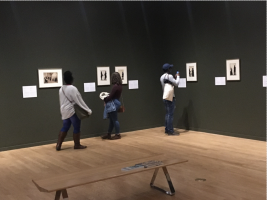
Students from Rachel Stephens’ seminar on American portraiture at the University of Alabama visiting the Birmingham Museum of Art to view the exhibition, “Black Out: Silhouettes Then and Now” in 2019.
In fall 2018, we announced CAA had received an anonymous gift of $1 million to fund travel for art history faculty and their students to special exhibitions related to their classwork. The generous gift established the Art History Fund for Travel to Special Exhibitions. We are happy to accept new applications again for this upcoming year.
The fund is designed to award up to $10,000 to qualifying undergraduate and graduate art history classes to cover students’ and instructors’ costs (travel, accommodations, and admissions fees) associated with attending museum special exhibitions throughout the United States and worldwide. The purpose of the grants is to enhance students’ first-hand knowledge of original works of art. Interested members can also see recent awardees share their experiences at the session at the CAA Annual Conference at the session Art History Fund for Travel to Special Exhibitions: Sharing Stories.
Applications are due by January 15, 2023.


